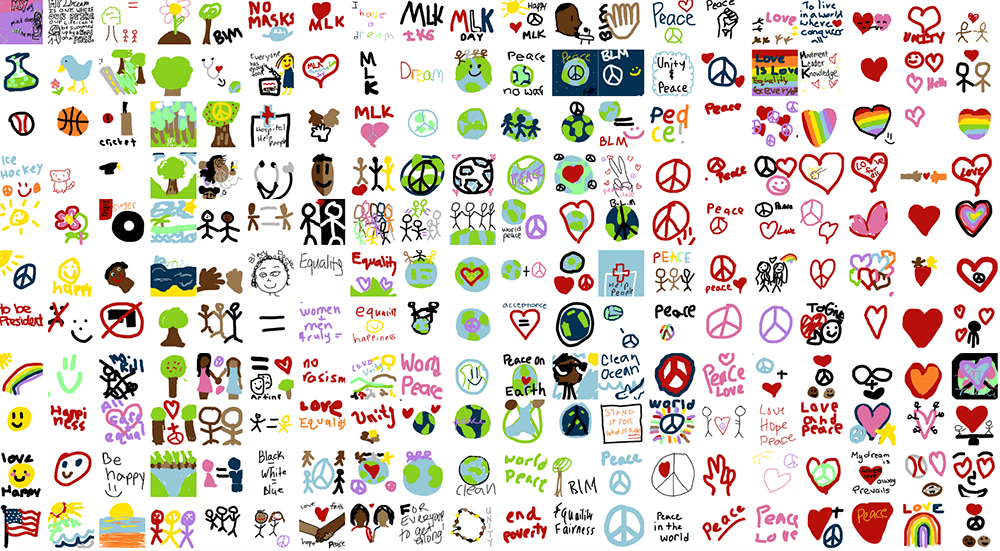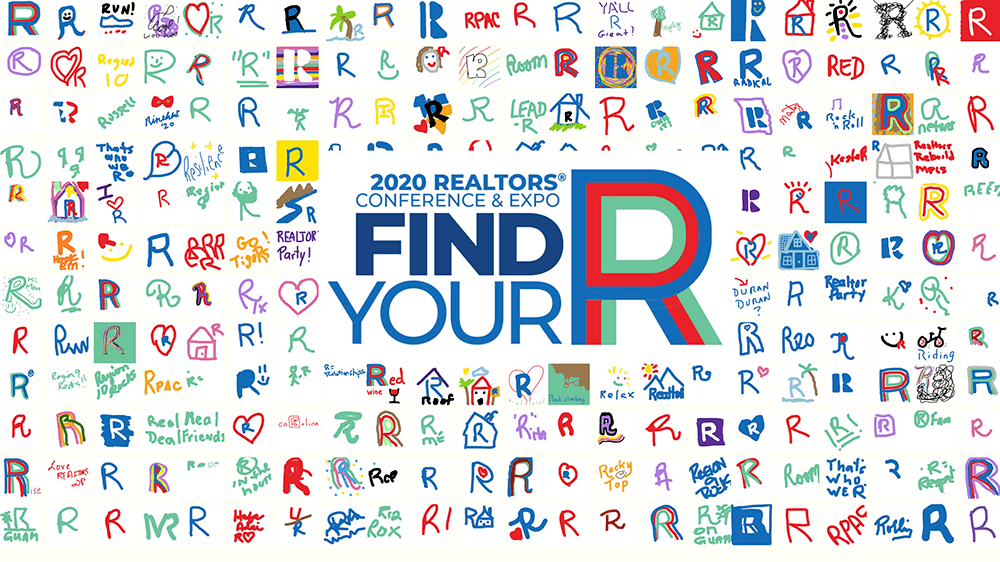
Piccles, an interactive platform for sharing drawings, works like an online collaborative coloring book where participants create individual drawings that are put together on the app. (Images courtesy Piccles)
Chris Bent has always had an entrepreneurial streak. The founder of Piccles, an interactive platform for sharing drawings, Bent and friends created a company that matched investors with solar-energy companies while he was still in college. But when Bent got a corporate job selling software, he said, “I felt all the creativity leave my life.”
It made him wonder about what happens to creativity as people get older. “Why is it that you ask a six-year-old if they’re an artist, they’ll say, ‘absolutely,’” he said. “And then if you ask a 26-year-old, most of the time they say, ‘No, that’s not me.’” When Bent did some research, he found that he was not alone in feeling like he was not reaching his creative potential, yet he still wasn’t quite sure what to do about it. He’d participated in paint nights, the ones where “you sit in a bar, you drink a couple glasses of wine, and they show you how to paint the Eiffel tower,” Bent said. “Those are great, but I can’t get drunk every time I want to get over my fear of creating something and putting it out into the world.”

During an online Martin Luther King Jr. Tribute and Celebration hosted Jan. 18 by the Office of Human Rights in Montgomery County, Maryland, organizers used Piccles and asked participants to draw their responses to the question, “What is Your Dream for Montgomery County?”
Coloring Online
In his quest to find a creative outlet, Bent built a tool for himself: an app for an online collaborative coloring book. It provided a low-risk way for users to express themselves — instead of one person spending an hour making a drawing, 100 people could spend a minute drawing together in a shared environment, where they could remain anonymous and where there was no judgment, he said.

Chris Bent
As Bent began looking for a way to sell his app — which he founded in 2016 and came up with the name “Piccles” as a combination of “pictures” and “pixels” — he began to see its potential for creating not just art, but connections between people. Originally a standalone app, Piccles really began to take off after it was redesigned as a web application, where it was more accessible and easy to integrate into systems, Bent said. In Montréal, where Bent is based, the platform was used to turn a public projection screen on a busy corner into a collaborative graffiti wall that invited contributions from passersby. The collaborative drawing created an instant community among its users, Bent said. “It was a very cool experience that just kind of made connections happen.”
The platform made its way onto trade-show floors after people began reaching out to Bent and asking him to create booth activations to help engage visitors, he said. When the pandemic shut down in-person events, the platform was easy to adapt to virtual events and the company pivoted toward working with organizations that were looking for ways to connect communities. Piccles can serve as a stand-in for the collective experiences that one “normally had when you walk into a conference hall and see everyone,” Bent said. “Clients are using Piccles to kind of tap into that feeling and that fun that people can have as a large group together.”
One such client was the National Association of REALTORS (NAR), where organizers were looking in particular for ways for their members to connect with one another at their fall meeting, which moved online. NAR used Piccles as a kind of icebreaker for attendees to engage with as they arrived online, said Heidi Henning, NAR’s vice president for meetings and events. That was successful, Henning said — attendees contributed hundreds of self-portraits and representations of the association’s ® trademark symbol after REALTORS (in all caps). But where the application shone brightest was in a smaller session, where attendees used the tool to record their responses to questions about how they felt and what they valued. That turned out to be one of the conference’s highest-rated sessions, Henning said.
Piccles also was used during the Martin Luther King Jr. Tribute and Celebration hosted online on Jan. 18 by the Office of Human Rights in Montgomery County, Maryland. Organizers combined excerpts from performances recorded in previous years with a live, interactive session featuring Piccles, one which asked participants to respond to questions including, “What is Your Dream for Montgomery County?” In 10 minutes, his team collected almost 3,000 drawings, Bent said. (See the video recap at the end of the story.)

Organizers of the fall meeting of the National Association of REALTORS (NAR) used Piccles as an ice breaker, asking attendees to draw self-portraits and representations of the association’s trademark symbol.
Visualizing Data
The drawings that users generate create a database that can tell a much different story than traditional survey methods, Bent said. Quantitative surveys can collect a certain kind of data, “but if you’re trying to find answers to questions like ‘What do you think about your future?’ then drawing can really be a powerful tool,” he said. Drawings also can transmit more authentic information, because people “don’t know how to put a veil over the truth of what they really feel when they draw,” Bent said. If you ask someone how they’re feeling, they are likely to say ‘fine,” but if you ask them to draw how they are feeling, they may draw a frowny or angry face, he said.
The answers can be surprising, like when Bent asked a group, “What is holding you back from reaching your creative potential?” Responses included concerns like overthinking, fear of failure, depression, ageism, leadership, and lack of freedom, he said. “I thought money was really going to be number one, but it was time and feelings.” Bent uses the drawings to create recap videos and graphics that then can be used as content.
Piccles has never done any outside marketing — business has all been by word of mouth, Bent said. And right now, he’s getting inquiries from event organizers who see the app as a way to blend the virtual and in-person audience, he said. Using Piccles, Bent said, is a way of “getting the big picture by looking at every little picture.”
Barbara Palmer is deputy editor at Convene.
Martin Luther King Jr. Tribute Drawings
Piccles created this video recap of the images drawn January 18 during an online Martin Luther King Jr. Tribute and Celebration hosted by the Office of Human Rights in Montgomery County, Maryland.
